Top chefs reveal Australia's best-kept secret ingredients (plus where to try and buy them)
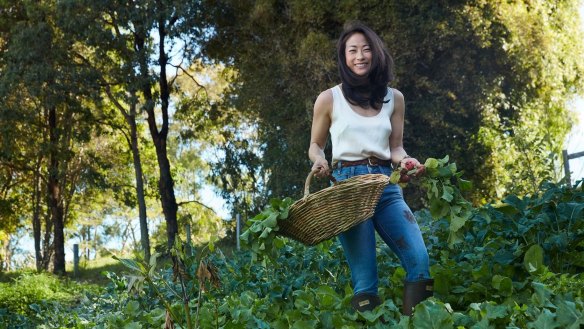
The special chef-approved produce and products you need to get your hands on.
Every chef has their secret weapons. For many of the best, they come in the form of relationships established with growers, producers and suppliers over many menus and seasons. For diners, the rewards manifest in dishes built around specialty ingredients that are the result of untold hours behind the scenes establishing crops and building awareness among curious cooks and restaurants.
Palisa Anderson is one such grower. Having established Boon Luck Farm outside of Byron Bay in 2016 to supply her family's Chat Thai and Boon Cafe restaurants in Sydney, Anderson soon found a calling supplying like-minded restaurateurs with heirloom vegetables and hard-to-find South-East Asian produce that took kindly to the region's subtropical climate.
Anderson's experience mirrors that of many small producers, who take a risk establishing supplies in the hope that there'll be enough interest to sustain the business.
The result for consumers is variety distinct from that seen in supermarkets and grocers. For Anderson, it's not just about range, either. "Smaller growers are often a lot more passionate about the environment, because we're often in it to create biodiversity, and because a lot of smaller growers go into it with a more idealistic, altruistic attitude, wanting to really be something good for the environment," she says.
If anything, the recent floods are a reminder not to take smaller suppliers for granted, and that the produce we come to admire often comes bundled up with somebody's livelihood. At Boon Luck Farm, the rain has dented supply and put vital equipment out of commission, while other operators such as Neighbourhood Farm in Oxley and Loop Growers in Cedar Creek, both of whom supply top Brisbane restaurants, have had to start over.
Not all of the following ingredients are from small operators, but in each case, they represent someone taking a gamble, with the outcome being a more unique and ultimately delicious food scene, rich in variety and brimming with possibilities. Seek them out.
Local wasabi stems, leaves and roots
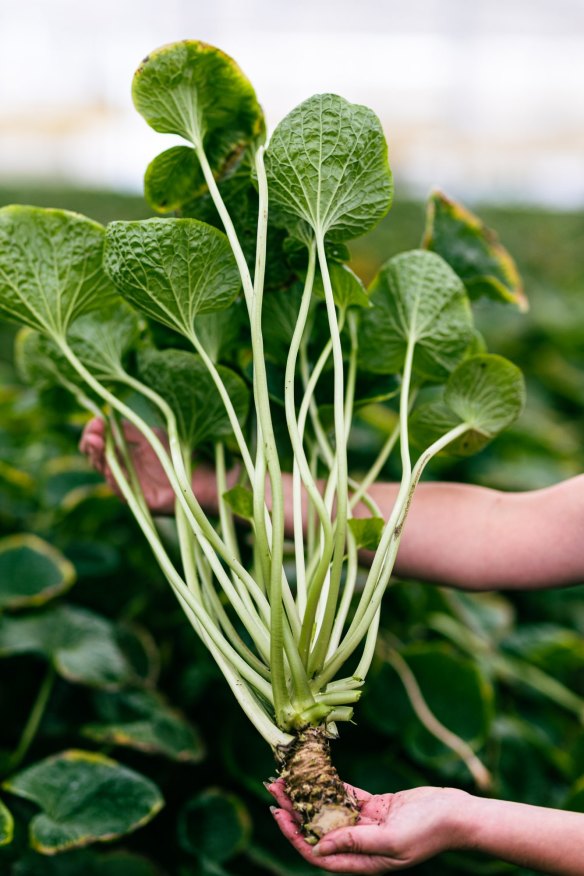
Dyed horseradish graces many a sushi train, but visit any of the country's omakase venues and wasabi takes a star turn, with the fresh-grated root adorning the day's catch. In many cases, if it's not from Japan, it comes from one place: Tasmania's Shima Wasabi.
Since new owners came into the fold in 2016, Shima has added stems, leaves, stalks, flowers and a pure wasabi paste to the mix.
Chef Andrew McConnell, for one, is a fan. "Whether it's the pickled stems we use at Supernormal, or the delicate blossoms at Cutler & Co, it's such a versatile ingredient that can influence the flavours of many dishes."
Try/Buy: At Supernormal, Cutler & Co and Kisume, Melbourne; Yoko Dining, Brisbane; Haco, Sydney; or from shimawasabi.com.au
Small-batch ancient grains
Not content with commercial wheat, Dougal Muffet – the hands behind Sydney's AP Bakery – went looking. His appetite for grains grown regeneratively took him to the Australian Grains Genebank, resulting in Muffet trialling ancient varieties on his parents' and collaborators' properties and house-milled rare ryes and wheats (such as Ford, usually grown for hay) making it into country loaves to complement the likes of buckwheat pains au chocolat.
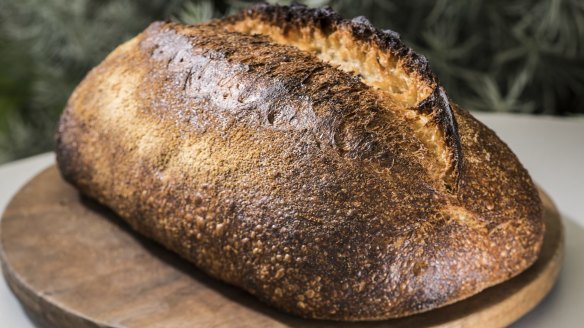
Where Muffet treads, others have led, including Small World Bakery in South Australia. Join the queues for a taste of what's to come.
Try: At AP Bakery, Sydney; Small World Bakery, South Australia; or buy closed-loop ancient and modern grains (including Ford, French red and triticale flours) from Tuerong Farm on Victoria's Mornington Peninsula at tuerongfarm.com.au
The garlic fuelling the country's finest hummus
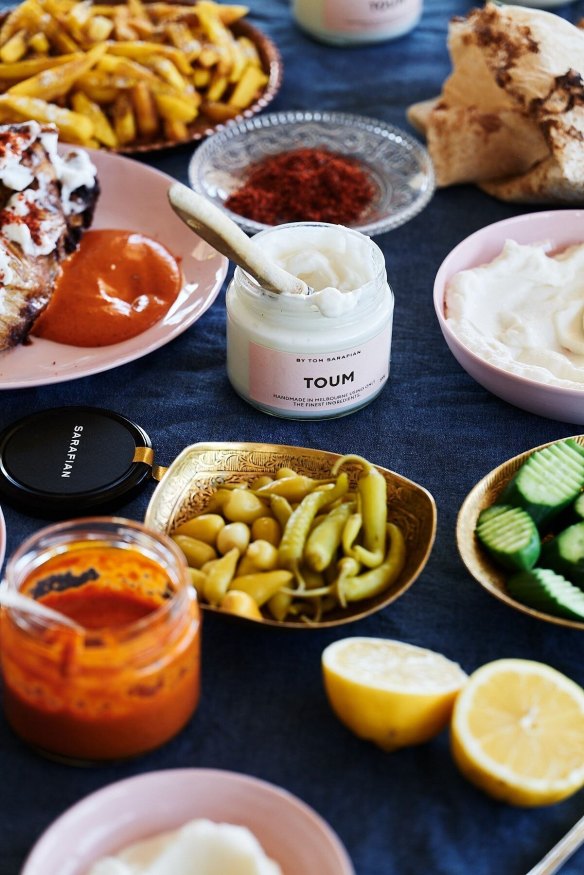
"One clove of good garlic is worth 10 of the bad stuff," says Tom Sarafian. He should know. Since August last year, the Melbourne-based former Bar Saracen chef has spent countless hours peeling the stuff to blend into his toum, harissa and his extra-creamy hummus.
The secret? Organic garlic from Day's Walk Farm, grown and cured in the Keilor Valley. Just 22 kilometres from Melbourne's CBD, it's run by Paul Miragliotta, also a founder of not-for-profit Farmer Incubator, meaning every scoop of Sarafian's finest helps empower future farmers.
Try/Buy: In Sarafian's toum, hummus and harissa (see sarafian.com.au; Sydney stockists coming soon); or at Morning Market and Coburg Farmers' Market on Saturdays.
Aromatic cold-pressed canola oil
All manner of oils receive acclaim, but it's far more common for those oils to be pressed from olives or nuts than canola. But at Block 275, based near Geraldton in WA, it is single-origin cold-pressed canola that's converting palates.
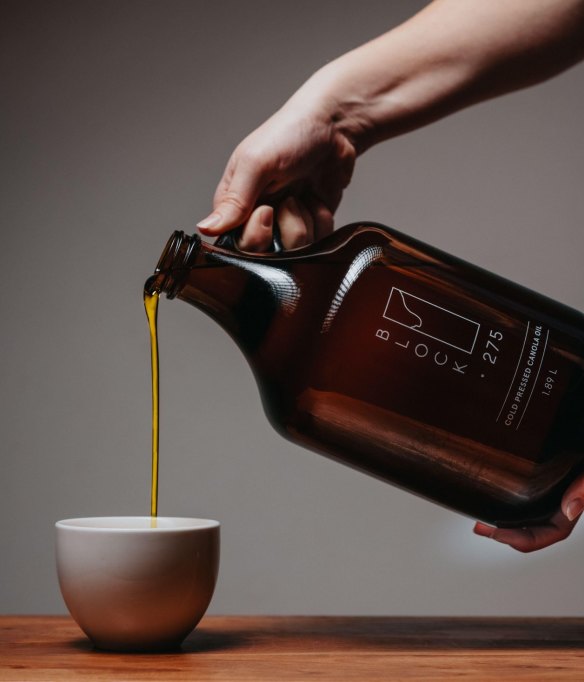
Bright and nuanced, the gamble taken by Fiona and Liam Mann has paid off in attention from chefs and restaurants such as Vasse Felix in Margaret River.
Cold-pressing means there are no solvents or hexane used, which is rare for canola, and it maintains its high levels of omega-3 and omega-6. It also has a higher smoke point than olive oil, so it's healthier when cooking at high temperatures.
Try/Buy: At Naber + IIII in Perth; or from block275.com.au
A Japanese ferment inspiring innovation
Koji has a long history as an integral element of sake, soy sauce and miso, but Aspergillus oryzae – the fungus that makes the magic happen – has also become something of a secret weapon for chefs seeking extra complexity.
Enter Adam Wolfers of Brisbane's Gerard's Bistro, who ferments chickpeas with koji spores, marinating meats in the result for up to 24 hours before cooking (either blended to a paste or as is), wiping off the excess before cooking.
"Or you can brush it on the meat an hour before you use it; it adds a salty, umami, almost cheesy flavour, and tenderises it," he says.
Buy: From merumiso.com
Like this? Try: Melbourne Sake's Australian sake melbournesake.com.au
Oysters grown in Tasmania's cool waters
With chefs increasingly fixating on Sydney rock oysters, it's been a tough time to be a Pacific. But royal miyagi oysters, farmed in Tasmania, have been changing the minds of those who find Pacifics overly flinty or sharp with iodine.
Khanh Nguyen, who flavours them with perilla and finger lime at Aru in Melbourne, is a convert.
"They're some of the best Pacifics you can find," he says. "They're always plump and I love their natural sweetness. We gently warm them in our woodfire oven to 42C, which brings out a whole new level of sweetness."
Try: At Aru in Melbourne, or on the omakase at Tempura Kuon in Sydney.
Like this? Try: Flinders Oyster Company angasi oysters sold from Flinders Pier, Melbourne; Tathra Oysters.
Honey from native bees
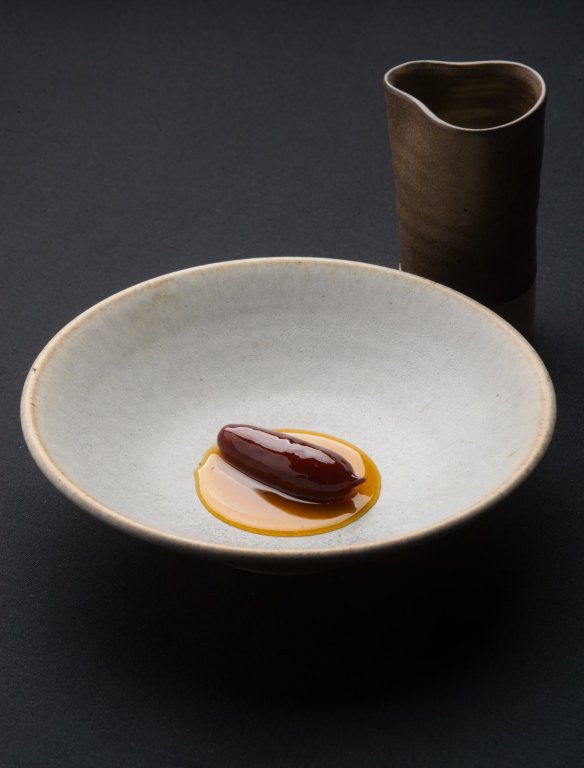
When Ben Shewry put a single finger lime (pictured) on the dessert menu at Attica, it wasn't that it was cooked for hours or finished with organic cream that made it so alluring. It was the sheen from the sugarbag honey glaze. This glimpse of a First Nations favourite at one of our best restaurants fuelled a growing interest in honey from native bees.
A couple of years later and sugarbag honey supply is set to become more reliable thanks, in part, to social enterprise Native Foodways, which aims to kickstart a rangers program seeing First Nations people establishing, managing and harvesting honey from native beehives.
Buy: Sample honey and support the project at nativefoodways.com.au
Like this? Try: Malfroy's Gold Wild Honey.
Bitter concoctions from a celebrated chef
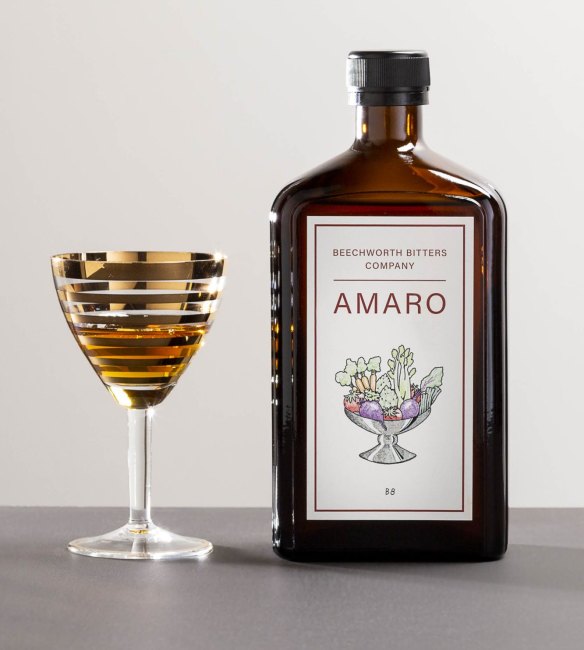
What started as a lockdown experiment has become a full-fledged business for Michael Ryan of two-hatted Provenance restaurant in regional Victoria, who has released five distinct amari (Italian-style digestive bitters) under the Beechworth Bitters Company label.
Ryan's versions, which pack a punch from the likes of rare citrus, rhubarb or native botanicals, can be drunk neat, but they've become an ace up the sleeve at bars and restaurants. The range includes Orchard Amaro, A Walk in the Black Forest and Up To Eleven.
Buy: From notwasted.com.au
Like this? Try: Okar Island Bitter.
Rare citrus that packs a punch
Yuzu has been creeping into the national palate, but it's the fruit's green and sour relative, sudachi, that's next in line. The Japanese citrus has fast become a staple at Mountain Yuzu near Mt Buffalo, who now supply it to drinkmakers and restaurants, including Quay, where a sudachi emulsion brightens a dish of peas, pistachio and licorice kombu (pictured).
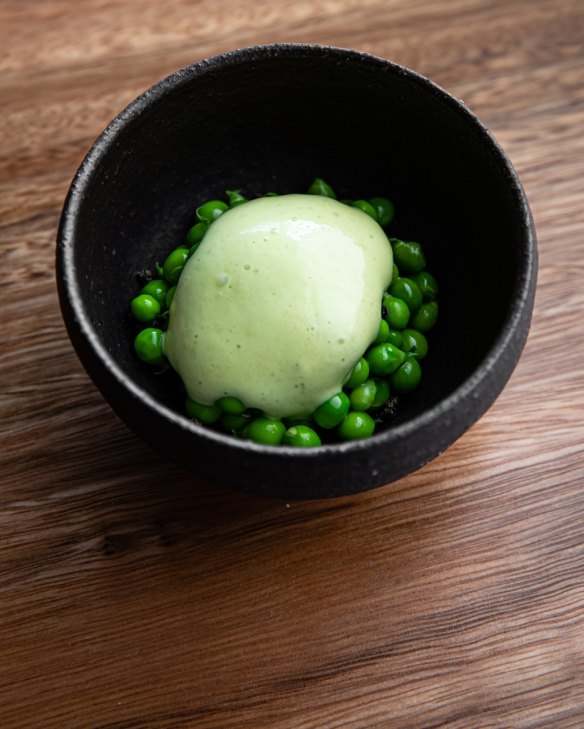
"Sudachi and yuzu are always on my menus at this time of year," says Quay chef Peter Gilmore. "It's amazing with seafood, particularly when you use the juice; sudachi are less perfumed, but distinctive in their own right."
Buy: From mountainyuzu.com.au in season.
Like this? Try: Yuzu Agrumato (yuzu pressed with olive oil) by Mount Zero, or Beechworth Bitters Company's Yuzucello, a riff on limoncello, the famous Italian liqueur.
True buffalo-milk mozzarella
Produced on a tiny farm on NSW's north coast, Elena Swegen's buffalo mozzarella, made under the Burraduc label, owes its glowing reputation among chefs such as Danielle Alvarez (Fred's, Sydney) to good conditions, a contented herd, and a dedication to craftsmanship.
"Elena's mozzarella is the closest thing here in Australia to fresh mozzarellas I've had in Italy," says Alvarez. "She makes cheese every week from her herd of buffalo and it is exquisitely delicate, creamy and lightly tangy. She will tell you – and it's true – to serve it at room temperature to taste all the subtleties."
Try: At Fred's, perhaps with olive oil and flaked salt, prosciutto or in-season tomatoes.
Like this? Try: Burraduc's buffalo-milk yoghurt, feta or scamorza; Vannella mozzarella made with Shaw River milk available from select delis, grocers and cheesemongers in Melbourne and Sydney.
Tea blends poured at top restaurants
Arthur Tong and Tjok Gde Kerthyasa have been quietly importing teas for more than a decade, but it's their bespoke blends for restaurants that catch the eye.
"The first thing I want to know is what is the chef's intention," says Tong. "Are they trying to achieve a particular flavour? Is it because they're trying to match a type of cuisine? Is it because they want to achieve a health benefit?"
The results speak for themselves, with an exclusive blend at Melbourne's Lee Ho Fook designed to complement Victor Liong's modern Chinese menu, or in Sydney, a licorice digestif for Tetsuya's, and a hibiscus brew with lemon myrtle made for Ricos Tacos.
You can also buy an incredible range of Tea Craft blends, from English breakfast to Red Mystic and Golden Horse Brow.
Try/Buy: From teacraft.com.au; try at Lee Ho Fook, Tetsuya's and Ricos Tacos; or try the custom blend at Mitch Orr's upcoming restaurant in Sydney's new Ace Hotel.
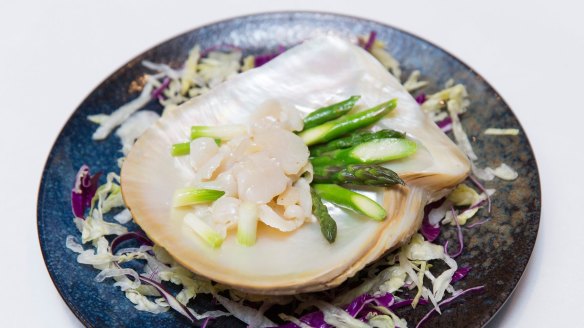
Pearl meat diverted from the jewellery business
Pearling has a long history in Australia, but it's only relatively recently that the meat from the bivalves has begun to grace tables at top local restaurants. For Bentley Restaurant and Bar's Brent Savage, smaller supplies have now become more accessible, meaning it can land on the menu more often.
"We serve it on the shell with salted apple, a buttermilk sauce and yuzu kosho [a fermented chilli-citrus sauce]," says Savage. "It's super sweet and super tender."
Look for it at Margaret, too, where Neil Perry has been dressing it with white-soy ponzu, the classic Japanese sauce.
Try: Bentley and Margaret, Sydney; Flower Drum, Melbourne.
Like this, try: Akoya oysters, sustainably grown in Western Australia.
Pasture-raised cockerels reared for the table
For every laying hen hatched, a rooster hatches. Rather than see them dispatched, Ryan and Rebecca Cirello have been raising rescued chicks on their farm in Llandilo, NSW.
Pastured up to 20 weeks, the cockerels (sold as R & R Roosters) are now commanding interest as a table bird for their texture and great depth of flavour. See them cooked confit then crisped up at Porcine or made into tsukune at Re, both in Sydney.
Or look for Chooks at the Rooke cockerels in Melbourne.
Buy: From Feather and Bone in Sydney, or select butchers in Melbourne.
Like this? Try: Bresse chicken from Tathra Place Free Range (see tathraplacefreerange.com).
Small-batch cider made from wild apples
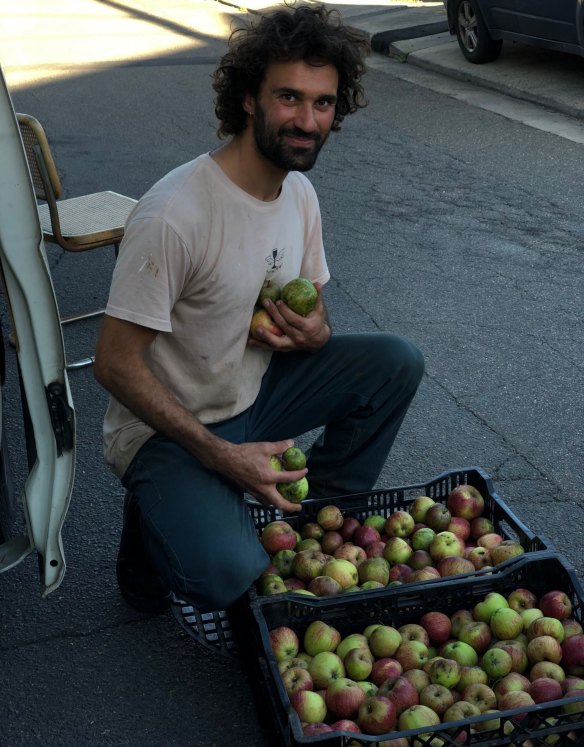
Australia lacks a supply of cider apples but wild picker Lucien Alperstein has found an alternative in fruits growing wild in cool-climate NSW.
"The apples that make good-quality cider aren't particularly good for eating," says Alperstein. "I'm out looking for apples which generally have more acid, more tannin, which you don't get in eating varieties; they're not the most pleasant apples to eat, but once they've been through fermentation, the tannins then become more balanced and nuanced."
Since wild apples don't grow true to seed, each roadside tree has its own qualities. Those that fit the profile are recorded, then later harvested, pressed and fermented. The result? Roadcider, an annual release through Wildflower Brewing in Sydney.
Try/Buy: Seasonally at Wildflower's cellar door, Byrdi in Melbourne or P&V in Sydney; and from wildflowerbeer.com.au (next release May 6).
Like this? Try: Manon Farm APQ Cider.
